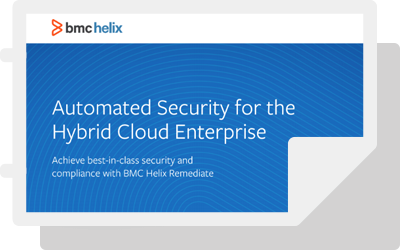The benefits of virtualization and cloud technologies include increased agility, flexibility, and scalability. They also inherently add layers of complexity to the tasks of managing and delivering services.
Customers have high expectations that require IT to provision and deliver services faster than ever before as well as always working towards zero downtime. Businesses must continually provide new value and innovative experiences for customers in order to stay relevant. However, they sometimes struggle to attain the benefit of speed when they try to deliver cloud services at scale.
Cloud management solutions must support these goals by accelerating digital innovation and reducing complexity, while maintaining and automating governance and compliance policies.
With the wide landscape of vendors offering hybrid cloud management tools, how do you choose a solution that’s right for your digital enterprise? Include and evaluate carefully these top capabilities:
Resource Management
The solution should have the ability to manage all aspects of the hybrid infrastructure, including:
- Servers
- Network
- Storage
- Endpoints
This ability enables IT to control each resource. Service blueprints should capture configuration and best practice information to reduce cloud administrative overhead and accelerate deployments. All cloud components in a production system need to be tracked in your configuration management database (CMDB).
Without these IT processes, managing and resolving issues around production systems is nearly impossible.
Performance Monitoring
Along with managing resources, the tool needs to monitor resource usage and its impact on system performance. Monitoring should be user-friendly with dashboards for quick status review along with the ability to trigger auto-scaling of resources up or down according to predefined service requirements in order to avoid service disruption.
In addition, your monitoring should provide a historical context and predictions about future capacity usage so that you can plan for growth or reclaim underutilized resources. Finally, monitoring should extend beyond the typical data center resources to include emerging mobile and container technologies.
Automation and Provisioning
Automation is key to success in the cloud, accelerating a wide range of operational tasks, reducing cost, and – when properly programmed – reducing risk by eliminating the element of human error.
Digital innovation initiatives usually focus on delivering more frequent releases of more apps to web and mobile platforms. This places pressure on IT to support agile app development and deployment processes across the full lifecycle. Developers and testers need fast, self-service access to cloud resources that provide consistent automated provisioning of development, test, and production platforms, so that they spend less time troubleshooting configuration changes caused by manually deployed systems and applications.
Easily provisioning complex environments including databases and middleware servers. Automatically scaling up or down based on system load should also be provided to improve the productivity of both developers and administrators. If a cloud management tool isn’t going to increase your productivity, why use it?
Scalability
Perhaps this goes without saying, but the cloud management solution needs to be able to scale. Your hybrid cloud will likely continue to change and grow, and so must your management tool be flexible to incorporate new technologies and scale across different geographies.
Choose a vendor that has a big picture outlook and a focus on the growing autonomous digital enterprise to ensure that their solution will grow with your business.
Cross-platform Interoperability
Providing IT with a “variable compute strategy” dramatically increases the speed of delivering digital services. Yet, no developer wants to be locked into a subset of infrastructure types. Many new cloud services will need to access physical and virtual infrastructure across an organization:
- Windows, AIX, or mainframe
- Hypervisors like vSphere, KVM, and Hyper-V
- Public clouds including Azure, AWS, GCP and more
Cloud management tools must help IT Operations deliver and manage these heterogeneous services in a simple way. Widespread support for operating systems and cloud platforms is essential to the user, and must be automated by the chosen solution.
Compliance and Governance
Unauthorized changes are one of the largest causes of system downtime. In addition, non-compliant configurations, including unpatched software are a leading cause of systems infected by viruses and malware as well as other malicious attacks.
For these reasons, it’s critical that your systems and cloud services are compliant with your policies and procedures. Thus, you must be able to integrate the compliance processes of your organization into your cloud management tool.
Additionally, the solution should automate common regulatory and operational compliance policies that govern and optimize IT agility. Systems compliance is no longer an option, it is a requirement. Even development systems need to comply with operational standards. Automating the detection and remediation of drift from standardized and authorized configurations can help ensure that your systems are updated timely and accurately. Best practice security needs to be in place and automated as well.
Reporting
Last, but certainly not least, the solution needs to provide robust reports on resource usage. It’s essential that the tool integrate with data sources from other technologies in order to illustrate the state of the hybrid cloud as a whole.
As companies adopt more virtual and cloud services, they are quickly growing from a rounding error to a major cost center. To more effectively manage the cloud, you need good data and detail about:
- Users
- Applications
- Resource types
- Capacity
- Costs
Status reports provide key insights into the cloud environment and raise visibility of IT activities and analytics to management.







